As the weather cools down in Florida, many pests, including spiders, look for cozy places to spend the winter. While most Florida spiders are harmless, some can be dangerous to humans. Understanding the common overwintering spiders in Florida, how to identify them, and how to prevent them from invading your home is essential.
Common Overwintering Spiders in Florida
Brown Recluse Spider
Identification:
The Brown Recluse Spider is typically light brown with a distinctive violin-shaped marking on its back. They are about 1/2 to 1 inch long, including the legs, and have six eyes arranged in pairs rather than the typical eight.
Danger to Humans:
This spider is venomous and can cause serious reactions in humans. A bite may result in pain, redness, and swelling, followed by blistering and necrosis of the skin in some cases.
How They Get Inside:
Brown recluses often enter homes through cracks and crevices, especially in basements or storage areas. They can hide in boxes, clothes, and other items left undisturbed.
Prevention:
To keep these spiders out, seal cracks around windows and doors, and keep storage areas organized and free of clutter. Regular vacuuming can also help remove spiders and their webs.
Black Widow Spider
Identification:
Black Widow Spiders are easily recognized by their shiny black bodies and the distinctive red hourglass marking on the underside of their abdomens. They are about 1.5 inches long with long, thin legs.
Danger to Humans:
Black Widow bites can be very serious and require immediate medical attention. Symptoms include severe pain, muscle cramps, and even respiratory issues.
How They Get Inside:
These spiders often seek shelter in dark, undisturbed areas such as woodpiles, garages, and basements. They can enter homes through small openings.
Prevention:
Reduce clutter both indoors and outdoors to eliminate hiding places. Make sure to seal any gaps around windows and doors. Additionally, keep outdoor trash and wood piles away from the house.
Wolf Spider
Identification:
Wolf Spiders are large and hairy, with a body length of 1 to 2 inches. They come in various colors, often brown or gray, and have distinct markings. Unlike many other spiders, they do not spin webs.
Danger to Humans:
While not venomous to the extent of the Brown Recluse or Black Widow, a Wolf Spider bite can be painful and cause swelling and redness.
How They Get Inside:
These spiders can wander indoors in search of prey. They are fast runners and may enter through doors, windows, or cracks in the foundation.
Prevention:
Maintain a tidy yard and remove debris where these spiders might hide. Seal entry points and use screens on windows and doors to keep them outside.
Cellar Spider
Identification:
Cellar Spiders, often referred to as “daddy longlegs,” have long, thin legs and small bodies, usually around 1 inch in length. They are pale yellow to light brown and have a fragile appearance.
Danger to Humans:
They are harmless to humans and are often considered beneficial because they feed on other spiders and pests.
How They Get Inside:
Cellar Spiders typically enter homes through cracks and gaps, particularly in damp areas like basements or cellars.
Prevention:
Regular cleaning and removing webs can help control their population. Make sure to address any moisture issues in your home, as Cellar Spiders are attracted to damp conditions.
House Spider
Identification:
House Spiders are usually light brown and can be identified by their round bodies and long legs. They measure about 1/4 to 1 inch in size.
Danger to Humans:
House Spiders are generally harmless; however, like all spiders, they can bite if provoked.
How They Get Inside:
These spiders often come indoors through open doors and windows or through gaps in the foundation.
Prevention:
Keep windows and doors tightly sealed and utilize screens to prevent their entry. Regularly vacuuming and dusting can help control their population indoors.
How Spiders Get Into Your Home
Spiders typically enter homes through small openings around windows, doors, and foundations. They may also hitch rides inside on boxes, clothing, or outdoor furniture. Once inside, they seek dark, undisturbed areas such as basements, attics, and storage spaces.
Tips for Spider Prevention
- Seal Entry Points:
Inspect your home for cracks and gaps in windows, doors, and the foundation. Use caulk to seal these entry points and prevent spiders from getting inside. - Maintain a Clean Environment:
Regular cleaning and vacuuming can help eliminate spider webs and eggs. Pay special attention to corners, basements, and attics where spiders tend to congregate. - Reduce Clutter:
Spiders love hiding in cluttered areas. Keep your home organized and reduce unnecessary clutter, especially in storage spaces. - Use Outdoor Lighting Wisely:
Bright outdoor lights attract insects, which in turn attract spiders. Use yellow bug lights or motion-activated lights to reduce this attraction. - Consult a Pest Control Service:
If you have a significant spider problem or are concerned about venomous spiders, it’s wise to consult a pest control company. They can provide effective treatments and ongoing pest management services.
While many spiders in Florida are harmless, it’s important to be aware of the few venomous species that can pose a threat to humans. Understanding how to identify these spiders, knowing how they get into your home, and taking preventive measures can help keep your living spaces spider-free. If you’re dealing with an infestation or have concerns about dangerous spiders, don’t hesitate to reach out to a reputable pest control service for assistance. Protect your home and family by staying informed about Florida spiders and implementing effective prevention strategies.



